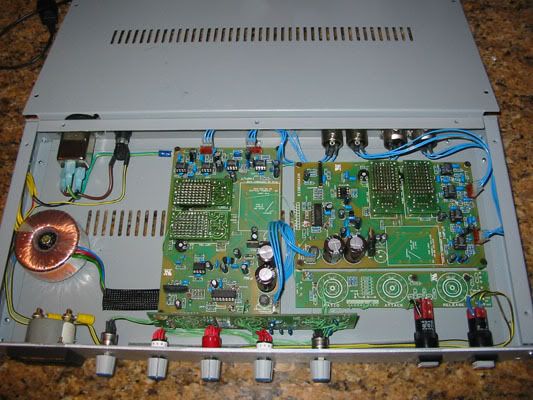[quote="mikep]
wayne/keith, How is the true power summing mod coming along? I wonder if this could be fit on a genuine 384? one mod I had in mind, that won't work with a Gssl but will with your "ultimate version", is to lowpass filter the sidechain signal cross-coupling. so that high frequencies, or the fast components of the CV signal, are essentially unlinked. I can explain the reason for this. In mastering I compress unlinked all the time, usually with a 33609 (everthing is stepped, so it is easy to match L/R). with very small amounts of GR, "image shift" is not a real concern. (I don't know why people get so bent out of shape over this, probably because they have never tried it for themselves and LISTENED.) a subtle narrowing of the image, however is a problem. rule of thumb: the faster the time constants, the better it sounds unlinked. IMO the only tradeoff is that when running linked, the center can be more solid. it is primarily a low-end thing. Sometimes I use this to my advantage, if I have the urge to cut a little low end with an EQ, sometimes the unlinked comp gets you at least partway there "for free". but it would be nice to have the wide image AND the solid lows in the center.
mike p[/quote]
I've been a broadcast engineer for 20+ years, and have done my share of experimenting with commercial audio processors, designing several processors, and experimenting with many different types of topologies, and when "strapping" the channels is required, the "or", or greater of the 2 channels control always sounds best, keeping the loudness ratio between the channels equal, and providing the most solid sound.
I've used the That chip sets in several custom designs and have recently played with power summing. I like it better than the arithmetic sum into one detector, but I'm not sure I like it better than "or-ing".
If you want to have fast transients handled unstrapped, you have two options; 1) install a second set of detecors to handle this 2) modify the "or-ing" connection and timing network so that each channel's detector feeds a "fast" timing section, as well as "or-ing" to a "slow" timing section. I've experimented with this in the past, and it works well.
The Aphex compellor 320a uses a similar scheme, where you can strap the 2 channels, strap the slow leveler only, leaving the faster compressor unstrapped, or unstrap everything.
For a quick and dirty check, you could take unstrapped detectors, and connect a resistor between the timing circuits, using a value that would charge the opposite channels timing cap with an average speed value. i.e., if the cap is a 1uF, and your attack time is 1-10ms, use a 22-47kohm resistor for a 22-50ms attack. Average signals will still respond to the "greater of the two, while transients will be handled by each individual channel's detector.
Just for fun I'll throw this into the mix; why not provide a sum and difference path, and compress the M+S separately, like the good ol' Fairchild 670 did?


































